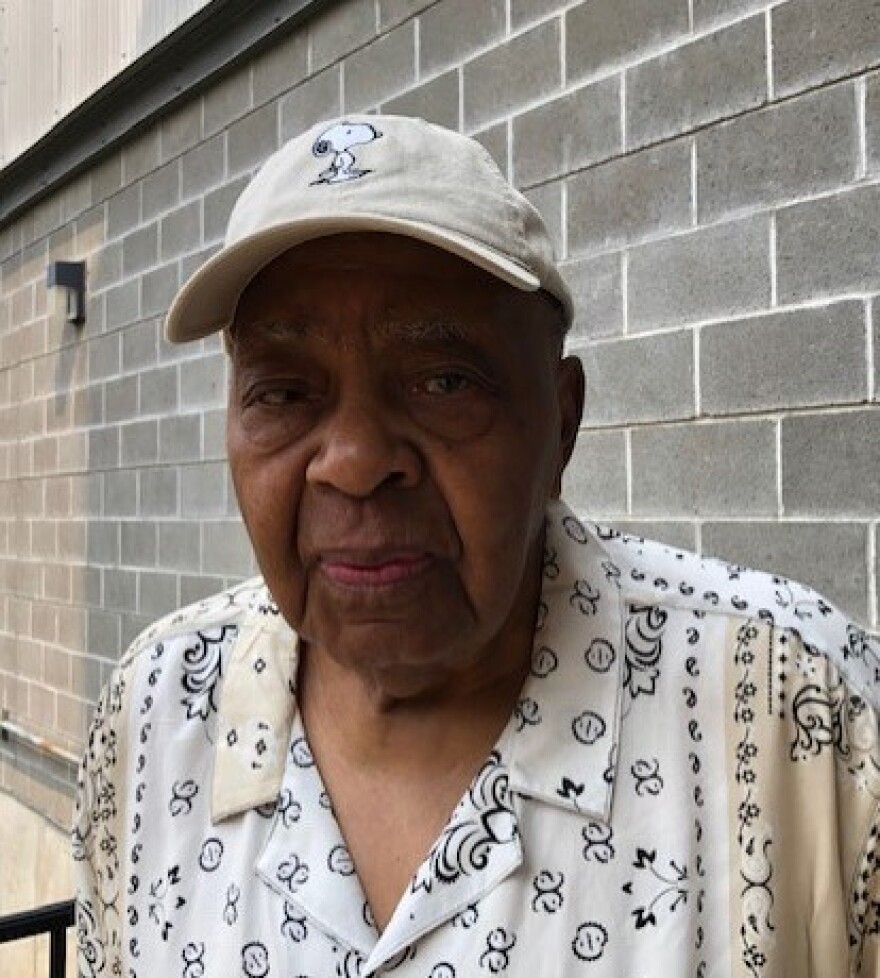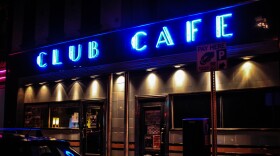Willie Williams knows the South more than a little bit. He was born in Madison, a small Georgia town, in 1935. Though he came to Pittsburgh in late 1944, his family repeatedly returned to visit over the years, enduring the Jim Crow segregation they’d always known there.
Nonetheless, in the late ’50s, as a young Black Army private assigned to a base near Dallas, Williams was uncertain about his first trip to where he was stationed.
“I found out I had to drive to all those Southern states to get to Texas,” said Williams, who then lived on the North Side. A white traveler could have set out with hardly a second thought. But while Williams owned a car, all the way South it would be two-lane roads dotted with hotels and restaurants that — uniform or no — would refuse service to people who looked like him.
Help was at hand in the form of the Negro Motorist Green Book. Williams knew of this paid national directory of businesses that would serve Black folks: the Hill District bed-and-breakfast that had been run by his family had once purchased a listing. He’d never actually used one, though. Now a copy he acquired at a Black-owned Pittsburgh travel agency helped him get safely to Mineral Wells, Texas.
The Green Book

Williams, now 87 and living in East Liberty, was one of countless people the paperback Green Book helped between its creation, in 1936, by Washington, D.C., postal carrier Victor Hugo Green, and its final annual edition, in 1966. And Williams’ is among the Pittsburgh histories included in “The Negro Motorist Green Book,” a touring Smithsonian Institution exhibit currently at the Heinz History Center — one of three similarly themed exhibits currently (and coincidentally) occupying Pittsburgh galleries.
The others are “The Great Migration: Black Mobility and the Automobile,” the Frick Pittsburgh’s look at the role cars played in the historic movement of Blacks from the South in the early and mid-20th century, and “Traveling While Black,” a virtual-reality experience at the Pittsburgh Cultural Trust’s 820 Liberty, Downtown.
Of these, “Green Book” is the most densely packed with information. It blends displays on the publication with artifacts from businesses it featured — from service stations to Harlem’s famous Savoy nightclub — and even home movies of Black folks on vacation at mid-century, frolicking beneath palm trees.
“People were killed going into the wrong town or stepping into the wrong hotel, or whatever,” said Samuel Black, the History Center’s director of African American Programs. “It was very hostile. And so that’s why the Green Book exists.”
Pittsburgh, like other Northern cities, had its own Green Book listings. Most were in the Hill District: the Flamingo Hotel, Scotty’s Garage, Vee’s Restaurant, Orchid Beauty Parlor. These are memorialized on a big floor map of the city, just one piece of the Pittsburgh-specific content that Black curated for the exhibit’s History Center incarnation. Black travelers needed those listings, because even here, many businesses still restricted or denied service to Blacks.
“Most people for some reason still have this notion that all the bad stuff happened in the south. It did not,” said Black. “And so that’s part of the story we wanted to tell. That’s very important for people to learn and understand about Pittsburgh.”
One display recalls famed singer Nat King Cole’s 1949 lawsuit against Downtown’s Mayfair Hotel for denying him accommodation. (Cole won the suit, but the Mayfair was required only to issue an apology, rather than pay damages.) There are also hair salon chairs from a Black-woman-owned beauty parlor here, a vintage car honoring Scotty’s Garage, and oral histories from Pittsburgh residents including Willie Williams.
By way of recalling the Green Book (which some visitors might know of thanks to the Academy Award-winning 2018 film of the same name), the exhibit also documents a vibrant national network of mid-century Black-owned businesses. “You could pick up a Green Book and learn about Black businesses in Los Angeles, or Seattle, or other places, so it kind of broadened people’s understanding and perspective of the black landscape in America,” said Black.
Other attractions include rarely seen film footage from Charles “Teenie” Harris, the famed photographer who documented Pittsburgh’s Black community starting in the 1930s. The film depicts everything from a Negro Leagues baseball game at Forbes Field to color footage of throngs of well-dressed people walking the streets of the Hill.
The Great Migration
Williams’ family was part of the Great Migration, the epochal movement of six million Black people northward to seek work and escape Jim Crow; between 1916 and 1950, Pittsburgh’s Black population tripled.
The “Great Migration” exhibit in the Frick’s Car & Carriage museum features 10 vintage vehicles, from a 1914 Ford Model T and a sapphire-blue 1949 Chevy pickup (complete with bill of sale from Salisbury, North Carolina) to a 1934 Buick Model 91 Club Sedan, with its chrome fittings and rich brown paint job the epitome of pre-war luxury. Alongside mannequins adorned in stylish period clothes, there’s even a tribute to Pittsburgh’s Black-owned Owl Cab Company, founded in 1947 by Silas Knox: a black 1941 Pontiac Super Streamliner Torpedo 6 Sedan Coupe, complete with the Owl logo.

Just as Owl Cab testifies to the need for a Black-owned company to ferry residents through neighborhoods where white-owned firms didn’t venture, so “The Great Migration” acknowledges that while cars brought freedom of movement to families who could afford them, they also exposed those travelers to new dangers.
Black travelers, the exhibit reminds us, favored big cars because they had to carry food they might not be able to buy on the road — and because they might have to sleep in them. And a banner-sized image reproduces a chilling photo taken in 1956, in Clinton, Tennessee — three Black people trapped terrified inside a sedan under attack from a white mob protesting school integration. (The travelers, visitors from Michigan caught up in the racist mayhem, were captured on film for LIFE magazine by photographer Robert W. Kelley.)
“It’s a disturbing image, but it was a reality for a lot of families who traveled in that time period,” said Dawn Brean, a curator at the Frick.
As the cover line on the '56 Green Book tersely put it, “Carry your Green Book with you — you may need it.” (The Green Book, by the way, wasn’t the only guide for Black travelers in those years; in “The Overground Railroad: The Green Book and the Roots of Black Travel in America,” Candacy Taylor writes there were a dozen others, though none was as long-lived and widely distributed.)
Traveling While Black
At 820 Liberty Gallery, the touring exhibit “Traveling While Black” takes an approach that is both high-tech and startlingly intimate.
The storefront gallery has made over to resemble Ben’s Chili Bowl, a Washington, D.C., restaurant that’s long been a community hub for Black people. The virtual-reality portion consists of a film by Academy Award winner Roger Ross Williams and Emmy Award-winning Felix & Paul Studios.
Visitors strap on a VR headset and find themselves seated on a stool or in a booth at Ben’s, where they can listen to stories like that of Sandra Butler-Truesdale, who recalls traveling by train into Virginia as a girl, in the 50s. Black people were not allowed to relieve themselves until the train stopped, she said.
“I see people treat their dogs better now,” said Truesdale. “Right now, they treat their dogs better than they treated us as Black Americans.”
With the passage of the Civil Rights Act of 1964, such mistreatment began to fade. With more businesses open to Black patrons, the Green Book published its final edition in 1966. Willie Williams, who used the Green Book as an Army private, said traveling to his hometown of Madison, Georgia, these days is much nicer.
“I enjoy it now, you know, that I can move around in the town without anyone saying anything or being arrested or whatever else,” he said. “It’s a beautiful little town.”
Visits to “Traveling While Black” include the chance to fill out a survey as part of a study by Lehigh University on the film’s impact.
“We’re getting a lot of comments about how powerful the film is, about wanting to find out more information about the Green Book and about the challenges of traveling and tourism both looking backwards and thinking about today, and having safe spaces today.”
That all three exhibits are in Pittsburgh just now is coincidental — all have been in the works for years — but the fact that all three exhibits exist speaks to the unfortunate but abiding relevance of such issues. Numerous studies show Black drivers are still more likely to be stopped by police than white motorists, to say nothing of the long string of fatal encounters between police and Black people on the road or in other public spaces.
“Traveling While Black,” for instance, concludes with an interview with Samaria Rice. She’s the mother of Tamir Rice, the 12-year-old boy killed by police in Cleveland, in 2014, while playing in a park. Together, the exhibits map the long road Black travelers have traversed, and suggest the ground yet left to cover.
“The Negro Motorist Green Book” runs at the History Center through August 13th. More information is here.
“Traveling While Black” continues at 820 Liberty through September 24th. More information is here.
At the Frick, “The Great Migration” continues into February. More information is here.
















